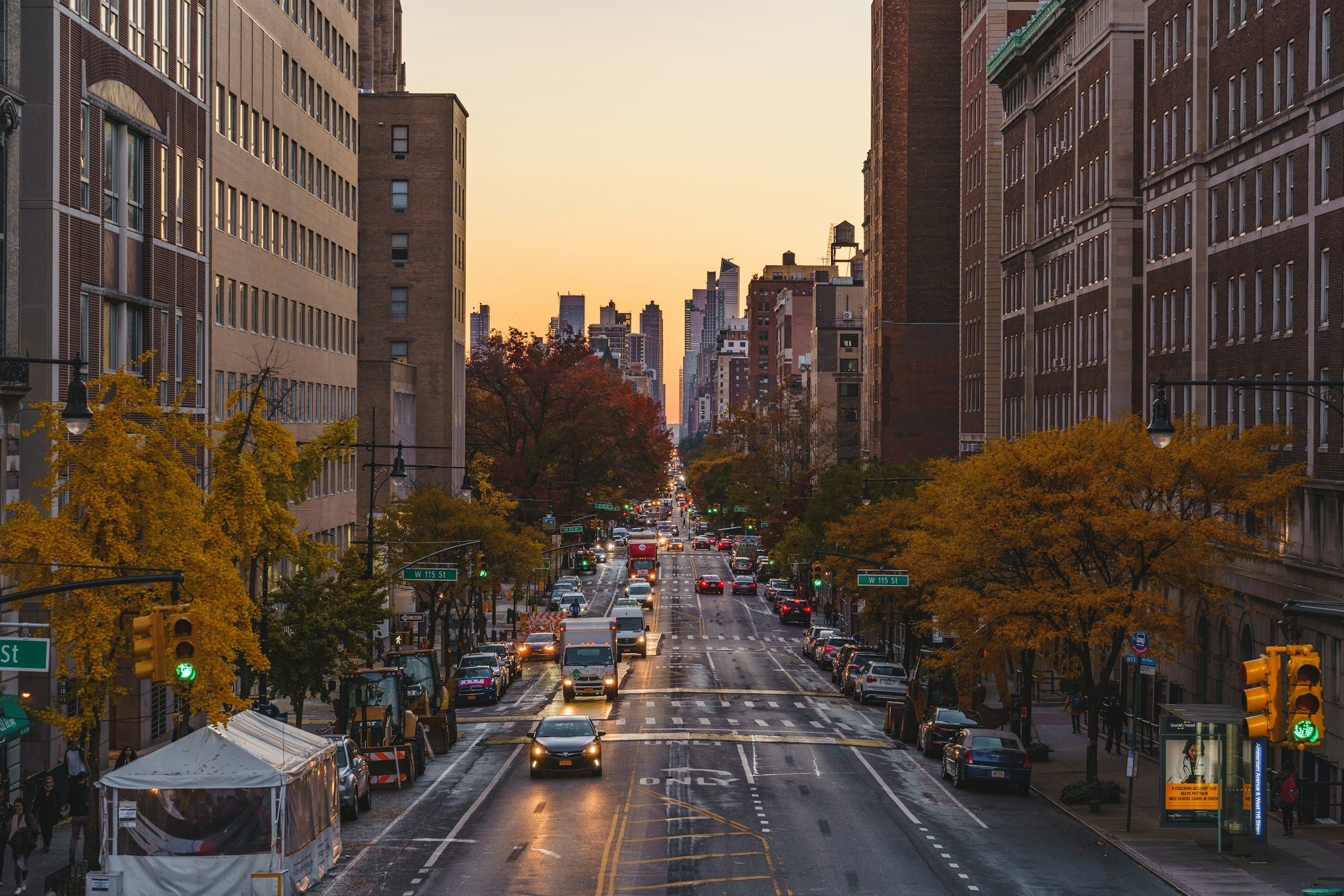The Urban Affairs Review blog welcomes public-facing contributions from academics, practitioners, and students working at the intersection of urbanism and politics. Contributions should be between 750-1,500 words.
Please pitch us to feature your work here!
ESSAYS
Our study presents a new approach to measuring U.S. gentrification at the census tract level. We utilize a popular public data set – the Home Mortgage Disclosure Act (HMDA) Loan Application Register – and leverage it in an unconventional way. The premise of our study is that there is valuable information about household income levels contained within this mortgage banking dataset. More specifically, the mortgage application data can provide a window into the income levels of households who are seeking to move into a neighborhood. We develop several new measures that benchmark the income of mortgage applicants against existing homeowners in a neighborhood. In our study we show statistically significant relationships between these measures and more traditional gentrification over the 2010 to 2017 period. Furthermore, instead of using a binary measure of gentrification, our tool allows one to gauge the breadth and intensity of the gentrification forces occurring from homebuyer demand in a given tract.
Over the past few years, the architecture of new apartment buildings has received significant attention. In particular, a style of new building sometimes called “fast-casual” or “gentrification architecture.” Many readers may recognize these buildings: blocky, generally black-and-white (although some come with neon pops of color), and unornamented. They’ve inspired countless debates, with critics calling them ugly and bland, or more creatively “Lego structures” and “oversized tin cans.”
Across Europe and beyond, cities are reimagining abandoned military sites as vibrant cultural spaces. But what happens when the very institutions that support these transformations begin to commodify them? Our paper explores this tension by comparing two distinct governance models for culture-led regeneration of former military barracks, Metelkova in Ljubljana and Kasárna Karlín in Prague, which have both significantly enriched their neighborhoods through creative placemaking, demonstrating how culture can transform abandoned urban spaces into vibrant spaces.
Minimum parking requirements—zoning regulations that require a certain number of parking spaces to be built with new developments—come with a long list of downsides. The requirements increase the costs of development, reduce housing densities, subsidize car ownership, and reduce walkability. They also make it difficult to adapt and reuse historic buildings. In response, cities as diverse as Anchorage, Buffalo, and San Diego have reduced or eliminated parking requirements in recent years.
There is a long history of municipal governments worldwide passing resolutions, laws, and regulations governing discrimination and anti-discrimination. These cities are increasingly stylized as “human rights cities,” where municipal governments seek to protect civil rights of their residents: examples include sanctuary city movements, passing municipal versions of international law, and instituting laws to protect LGBTIQ citizens. In short, cities have emerged as a critical space for civil society to protect human rights, which is especially important given the increasing prevalence of repressive laws targeting minority groups in many authoritarian and backsliding countries.
Coalitions amongst people of color are essential for building political power—particularly as resources and influence fall along lines of race and ethnicity. In “Fundamentals of Solidarity: Race Based Caucus Organizing in Houston,” I consider how Black organizers-built solidarity with each other and with the staff of Houston in Action (HiA).
Transit-oriented development (TOD) represents a promising form of development in urban transit corridors offering walkable communities, reduced car dependence, and enhanced access to opportunities. But all too often, the benefits of new transit investments are overshadowed by rising housing costs and the displacement of long-time residents and small businesses.
Public participation is widely regarded as a cornerstone of democratic urban governance. Around the world, governments and planners have embraced participatory practices to involve residents in decisions that shape their cities. Yet much of the academic and policy discourse continues to frame participation as a state-led process, where the public is invited by government actors to engage in predetermined formats designed to improve plans, policies, and projects.
What if restoring polluted streams behind public housing complexes could directly fund new affordable housing? This innovative approach, explored in our recent Urban Affairs Review article, introduces public housing authorities (PHAs) to a unique opportunity to generate additional revenue by participating in federal "compensatory mitigation" markets. Through our study of the Durham Housing Authority (DHA) in North Carolina, we demonstrate pathways through which urban stream and wetland restoration can be financially viable, environmentally beneficial, and socially impactful.
Police officers serve a public service role, as highlighted by scholarly literature on street-level bureaucracy. Thus, it matters whether police departments represent the social characteristics of communities. In socially diverse cities, police diversity promises to facilitate police–community interactions. However, to what extent are US police departments diversifying their personnel?
Are Canadian municipal politics simply about fixing potholes and managing traffic, or does ideology shape municipal behavior more deeply? In contrast to the U.S. and several other federations, Canadian municipal elections are overwhelmingly non-partisan. Fewer than one in five municipal officials run on party slates. This fact leads many to infer that Canadian city halls are free from the left-right ideological divide that exists at higher levels of government.
Emerging technologies, including real-time digital tracking systems, AI, and satellite imagery, can enhance public service delivery by enabling real-time performance monitoring, automating routine tasks, and improving the targeting of services. These tools also have the potential to support more responsive and personalized interactions with citizens, increasing both efficiency and trust in government institutions. Under what conditions are new and emerging technologies adopted by local governments?
Intergovernmental organizations play a pivotal role in America’s regions in important areas like transportation planning, Area Agencies on Aging services, and economic development, to name a few. These organizations serve as conveners and coordinators among local governments in their regions and represent their members to state and federal agencies. Given their importance, how can they ensure continuity and sustainability during leadership changes or staff turnover?
Aggressive policing has hidden costs. This study provides some of the first empirical evidence that intensified policing can lead to gentrification. Our findings challenge conventional wisdom about the causes of neighborhood change and offer a crucial lens to understand how law enforcement policies shape the places we live—sometimes subtly, sometimes dramatically.
As cities confront issues of inequality, racial justice, and housing displacement, studies like this reveal why rethinking public safety is not just about crime—it's about who has the right to belong in a neighborhood.
In this two-part miniseries, UAR Remixed speaks with several authors from the journal’s recent symposium, “The Intrinsic Relationship between Local Politics and Public Health.” We speak with the authors about their research, which covers a wide breadth of topics and ideas at the intersection of public health and politics in local contexts. In Part 1, we meet the authors and learn more about the big questions and pressing issues that prompted them to do this research. In Part 2, we’ll be thinking about the inherently political nature of public health policy, and how our present political climate is affecting public health research and institutions at the local level.
Cities are well positioned to test policies designed to address climate change that could be implemented more expansively at higher levels. And many city officials are enthusiastic about leveraging local governmental powers to reduce greenhouse gases and prepare their cities for climate impacts. Cities like Washington, DC, for example, have implemented innovative decarbonization policies such as building performance standards designed to ramp down emissions from large buildings; others, like Boston, have created municipal heat resilience plans that seek to adapt local infrastructure and services for increased temperatures.
In many cities around the world, there’s a growing concern: people aren’t participating in decisions that affect their everyday lives. Whether it's fixing a local park, building new roads, or improving public services, citizens are often missing from the conversation. Our recent study looked at four Croatian cities (Zagreb, Split, Rijeka and Osijek) to understand why this is happening. The findings were striking but not surprising: most people feel left out, unheard, and unsure of how to get involved.
Scholars and practitioners argue that local governments should capture rising land values to fund services and infrastructure, especially when the value results from public and collective action. Yet land value capture mechanisms are technically and politically challenging to implement. In this paper, we examine the four most prevalent land value capture mechanisms: (i) property and land taxes, (ii) real estate transfer taxes, (iii) betterment levies, and (iv) development charges. We propose a conceptual framework with seven design features to describe and compare the mechanisms, both across mechanisms within the same city and for a single mechanism across different contexts. Our analysis shows the superiority of property taxes as a tool for land value capture, and how contemporary scholarship advocating for development charges fails to recognize their drawbacks.
Politicians love to talk about crime in their election campaigns. The conventional wisdom is that tough-on-crime solutions will bring out the vote. Chicago’s recent mayoral elections showed this perfectly, when several candidates promised to reduce crime through increased policing. Yet researchers disagree about how crime and policing are connected to voter turnout. We analyze data from Chicago’s last two mayoral elections to clarify.
In urban governance, collaboration between municipalities is a common strategy to produce and provide services. However, the motivations behind such collaborations can vary significantly between city and suburban municipalities. Our recent study explores these differing motivations and explains why larger municipalities engage in intermunicipal cooperation (IMC) despite having the resources to operate independently.
Commercial gentrification, or upscaling of businesses in an area, has displaced long-standing and working-class residents and businesses in communities across the U.S. In communities of color, the drivers of commercial gentrification have become associated with wealthier, white, and new business owners with no prior connection to the areas they are gentrifying. The commercial gentrification of communities of color threatens to disrupt the local cultural fabric and residents’ ability to connect to their heritage through products sold and services offered in their native language. In our paper, we offer an alternative perspective on the drivers of commercial gentrification by looking at Latinx business owners participating in a new form of redevelopment coined gentefication.
The relationship between gentrification and policing is not new. Prior research has demonstrated increased policing in gentrifying neighborhoods, at times, driven by citizen demand. But data constraints have limited the ability to determine the source and characteristics of citizen calls to the police. Moreover, there are many important debates around what explains this increased demand. Conventional wisdom argues that increased demand by gentrifiers is simply a response to their exposure to greater crime when moving into previously disinvested spaces. However, substantial qualitative evidence finds that this demand is often a response by gentrifiers’ to perceived disorder in their new neighborhoods, and in particular, privileged whites’ response to more ethno-racial diversity within neighborhoods. My article evaluates these explanations and more broadly, the nature of demand for policing in gentrifying contexts in order to understand how privileged citizens wield power in gentrifying areas and how this shapes their interactions with local government.
Every three months, the Mexican National Statistics Institute (INEGI) publishes information on public safety perceptions for Mexico’s 96 most populated cities. About three years ago, in July 2022, right after INEGI published this data, the former Mexico City head of government and now president Claudia Sheinbaum, turned to Twitter to share some great news. She tweeted that perceptions of public safety continued to improve in the city thanks to her public safety and policing strategies. Several hours later, borough mayor Santiago Taboada made a similar claim (for context, Mexico City is divided into sixteen boroughs, each with its elected borough mayor). Taboada tweeted that residents of his borough ranked it as one of the safest in the country thanks to his policing model, which he called Blindar BJ or Protect Benito Juarez. For those familiar with Mexico City, Taboada’s tweet does not really make sense and is somewhat puzzling, given that security in the city is provided by the Mexico City police, an entity that was then accountable to Sheinbaum.
The re-election of Donald Trump worries many people about the condition of democracy in the US. How much pressure from executive power can the country withstand? Yet with America’s rightward turn, authoritarianism is less an exception than a rule in the Global North. In Austria, the Freedom Party won the elections in 2024. The Netherlands had a similar outcome in 2023, with Geert Wilders’ success, and Italy has been governed by Brothers of Italy since 2022. The rightward turn in the West was initially taken in eastern Europe in the 2010s, where the Right rose to power in Hungary, Poland, recently joined by Slovakia.
Informal settlements are urban communities where most people build homes and live without formal approval from government authorities. Residents in these communities often lack access to basic infrastructure and services such as clean water, proper sanitation and electricity. At the same time, they face a constant struggle for inclusion in urban governance and decision-making processes. To address some of these challenges, governments, policymakers and urban planners promote participatory mechanisms – community meetings, local councils, and consultations – as tools to ensure that marginalized communities have a say in shaping their neighborhoods. But do these mechanisms genuinely lead to meaningful inclusion, or are they just tokenistic gestures? This question inspired us to conduct a study in Nima and Old Fadama, Accra’s largest informal settlements.
Over the past decade, neo-progressive candidates have been elected to lead several major cities across Europe and the United States: the mayors of change in Spain (2015-2019), the Green mayors in France (2020), as well as leaders in Athens, Berlin, Naples, Preston, and Zagreb. These politicians share a common agenda: rejecting urban austerity policies, promoting more democratic governance, ensuring fair access to public services, fighting against social inequalities and advancing ecological resilience. This shift is particularly significant, as urban governance had been dominated by the neoliberal paradigm since the 1980s, emphasizing economic competitiveness, territorial attractiveness, and budgetary discipline.
Kenosha County, Wisconsin held the state's only contested race for District Attorney last year. The community's recent history of protest and violence resurfaced in the campaign as the Republican candidate had once represented a bail fund for Kyle Rittenhouse, a white teenager who shot and killed two local protesters. In the end, Republican Xavier Solis secured a narrow victory (51% - 49%) over Democrat Carli McNeil. However, this overall result obscures deep divisions within Kenosha County. Solis won just 43% in the city of Kenosha—the largest, most diverse city in the county and the site of the recent protests—he averaged 63% of the vote in the much smaller, whiter, and more rural communities in the rest of the county.
Who are city councilmembers? One image might resemble a national politician — someone with strong partisan attachments, perhaps a lawyer by trade, who runs for office with ambitious policy goals. Alternatively, we might picture a local community member — someone well-known in their neighborhood, running for the part-time role not as a steppingstone to higher office, but to serve their community. Perhaps council is simply a natural next step in their career path. They might be elected because Republicans and Democrats alike trust their understanding of local issues and their commitment to schools and public safety.
Over the last 25 years, community benefits agreements (CBAs) have become a means for residents of low-income communities to demand a greater share of the benefits of urban development projects. CBAs are bargaining agreements that are signed by a developer that commit to delivering a range of material benefits to affected residents in exchange for community support for the proposed project. Much scholarly and broader public attention has been focused on how unequal developer-resident negotiating conditions undermine their responsiveness to community concerns. Rather than focusing on the fairness of the negotiation process, this paper focuses on how effectively CBAs are implemented throughout the duration of the agreement.
With the coming of a second Trump administration, local action on climate change will be vital for making progress towards both mitigation and adaptation goals. One under-appreciated potential engine for this progress are mid-sized U.S. cities, which fall between the large cities (New York, LA), whose climate plans dominate the news and the small rural communities that are the focus of much of existing research on the green transition. Over the last two years, I’ve focused on the factors that shape climate policy outcomes in mid-sized cities and what they can teach us about local climate policy more broadly.





























